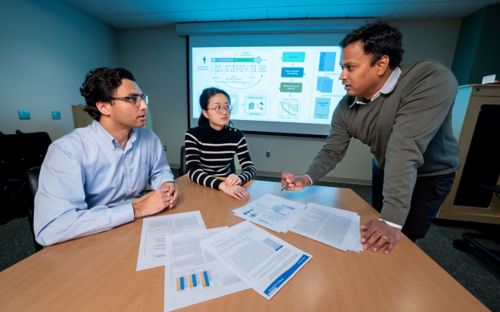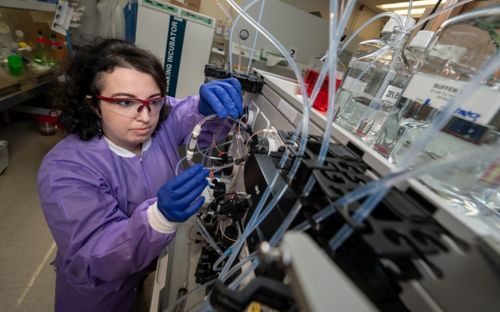Five steps to help your teens make the most of teletherapy

For many mental health conditions, research shows telehealth visits with a professional may be as effective as face-to-face visits.
Access to mental health care has always been crucial for teenagers, and maybe never more so than now. Physical distancing requirements and closures of schools, parks and other hangout spots can lead to increased feelings of isolation and stress, which can take a toll on mental health. Research from the H1N1 flu and SARS epidemics shows that quarantine can lead to post-traumatic stress symptoms in approximately 30% of children.
As the pandemic continues, teens need an effective mental health care solution that fits with physical distancing recommendations. For many mental health conditions, research shows telehealth visits with a professional may be as effective as face-to-face visits. As a result, our St. Jude Psychology Clinic was one of the first clinics at St. Jude to use telehealth for our patients.
Teens meet for teletherapy visits on a secure videoconferencing platform called Pexip, which is similar to meeting via Zoom or Facetime. In this way, we get to see our patients and make critical behavioral observations, not just hear what they say. Teens and pre-teen patients adapted to telehealth quickly, and parental support can help maximize the benefits. Here are five tips to help your teen get the most out of therapy sessions at home.
1. Prepare your equipment
Device: Use a smartphone, tablet, laptop or desktop computer equipped with a camera and microphone. You’ll also need an internet connection. We recommend using Wi-Fi instead of your data plan for a better connection.
Earbuds or headphones: These are optional but recommended — and can help with Step 2: providing a little more privacy.
2. Maintain privacy and confidentiality
No matter where therapy takes place, privacy and confidentiality are priorities. I begin each session by talking about my surroundings. I tell my patient there is no one in the room with me, and I will pause the session if someone enters.
Then, I ask my patient to do the same. If I notice my patient’s eye dart somewhere during the therapy session, I ask if someone is in the room.
Finding privacy can be a challenge. Teens need a safe space to talk about their mental health, but it's tough when the whole family is home. You can help by letting them know you value their privacy. Ask how you can help them to feel more in control.
3. Find a comfortable, safe space
I like my patients to be in a safe, comfortable and private space. This could be in their bedroom, backyard or in a vehicle parked in the driveway or garage. Sometimes having a pet by their side can be comforting. That's a win-win in my book — I enjoy meeting my teen patients’ furry friends.
4. Stay on camera
Facial expressions and body language help us understand how to help. Patients’ reactions and movements can guide us to the root of their concerns.
When we are in the same room with our patients, behavioral observation is easy. But during a video chat, it's tougher if teens don't stay on camera.
If your child moves the camera or walks out of view, we may ask to adjust the camera. If you are attending the session, we may also ask you to describe what your child is doing.
5. Have necessary resources at hand
We often use handouts or other resources during therapy, sometimes sent ahead of time. Help ensure these resources are ready before the session. It's also a good idea to fully charge devices and have any other accessories or possessions together and ready.
A few final thoughts
In many ways, participating in telehealth video conferencing for talk therapy is similar to a face-to-face visit. Our young patients can talk about what’s going on in their lives without leaving home — or even their rooms!
There may be times when an on-campus visit is more appropriate, but telehealth offers another tool we can use to help teens manage their mental health.






